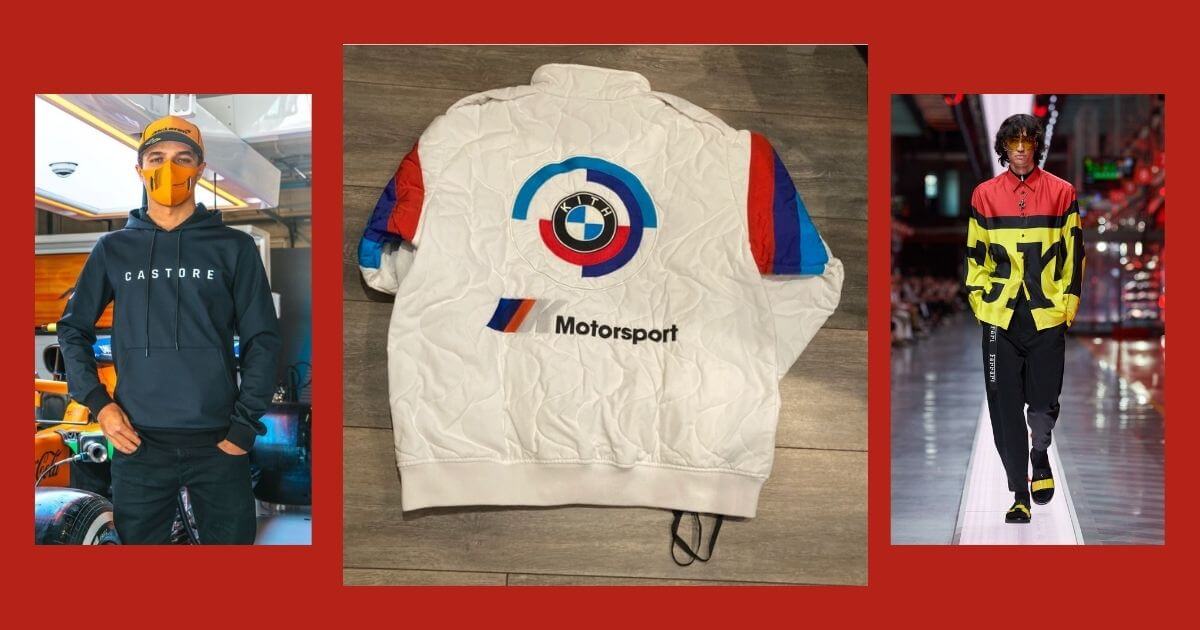Luxury Car Makers Have Designs on a Younger Audience

The boundaries between fashion and automobiles have long blurred with car designers benefiting from fashion’s influence and both industries striving to create products that express the taste and style of their owners.
But in recent months, the pairing has come into sharp detail with designs on marketing to a younger audience.
Ferrari in June introduced a ready-to-wear collection with its Brand Diversification Creative Director Rocco Iannone – whose resume includes stints at Dolce & Gabbana and Giorgio Armani — at its motor shop in Italy. There were nods to its heritage spread across trench coats, blazers, dresses, skirts as well as accessories such as sunglasses and gloves. And then there is Lotus Cars’ recent signing of Global Trademark Licensing (GTL) to represent its new Emira brand sportscar across a range of categories, including lifestyle.
In large part, the luxury car makers are trying to attract a younger crowd with a fashion and social media presence that potentially turns followers into car buyers. For example, the Kith streetwear brand, which has collaborated with BMW, typically plays to a sub-30-year-old consumer, who may eventually be in the market for a luxury car as they get older, says Chris Tague, founder of the Brand CoLab consulting firm that worked with GTL to secure the representation agreement with Lotus.
Effective Marketing
“Traditionally carmakers have looked at licensing as a financial tool in the form of t-shirts and caps where they make money flogging them to fans,” says Tague, who previously headed licensing at McLaren Automotive. “But now they realize that by doing these collaborations it’s an effective marketing tool and they are willing to work with these brands on not particularly onerous terms”
Instead the carmakers are trading some revenue for marketing exposure that reaches a younger audience that potentially “brings instant value” to a brand, says Tague. “The car brands bring a lot of power but maybe it’s not always to the right people, and [fashion apparel] is a cost-effect way to a reach a new audience and be a bit braver with their brands.”
Among recent developments:
- Porsche has taken apparel to the fashion runways with Arthur Kar, the owner of a specialty car dealership in France known both for sourcing rare models and his love of fashion. The “968 L’Art” – an homage to a 1980s Porsche model — was shown last week (Sept. 30-Oct. 3) as part of the Dover Street Market fashion show in Paris with Porsche’s and Kar’s logos appearing on graphics t-shirts along with green jackets inspired by the Formula One uniforms of the 1990s. Porsche also paired the introduction of its 911 GT3 with an apparel collection.
“It’s possible to be part of Porsche culture without being rich,” Kar told The Business of Fashion. “To me, it’s more about passion for the cars, not the money.”
With his label, Kar has sold a range of T-shirts and accessories such as sunglasses, usually priced under $300, and also collaborated with the likes of Vans and Carhartt. Kar told BoF that the fashion line now generates as much revenue as his car sales. - BMW flipped the apparel script in developing a limited edition (150 models) Kith-branded 2022 M4 Competition Coupe ($110,000) featuring the fashion brand’s logo throughout, including on the armrest, headrest, door sills and center console. BMW said it altered its logo for the first time in combining its rounded badge with the Kith brand.
- McLaren Automotive is further shifting into technical apparel in a co-brand with premium sportswear label Castore, extending a collection introduced last year that’s designed for performance and everyday wear. There’s a jacket with high-stretch performance fabric, lightweight hoodies and other apparel. The collection features McLaren’s signature orange color.
- Much like a fashion retailer, Lamborghini’s web store is putting on a summer sale offering up to 50% off certain apparel and accessories. The event comes amid heightened demand for Lamborghinis: the brand delivered 4,853 vehicles in six months ended June 30, its best first half ever with sales up 37% from a year ago.




